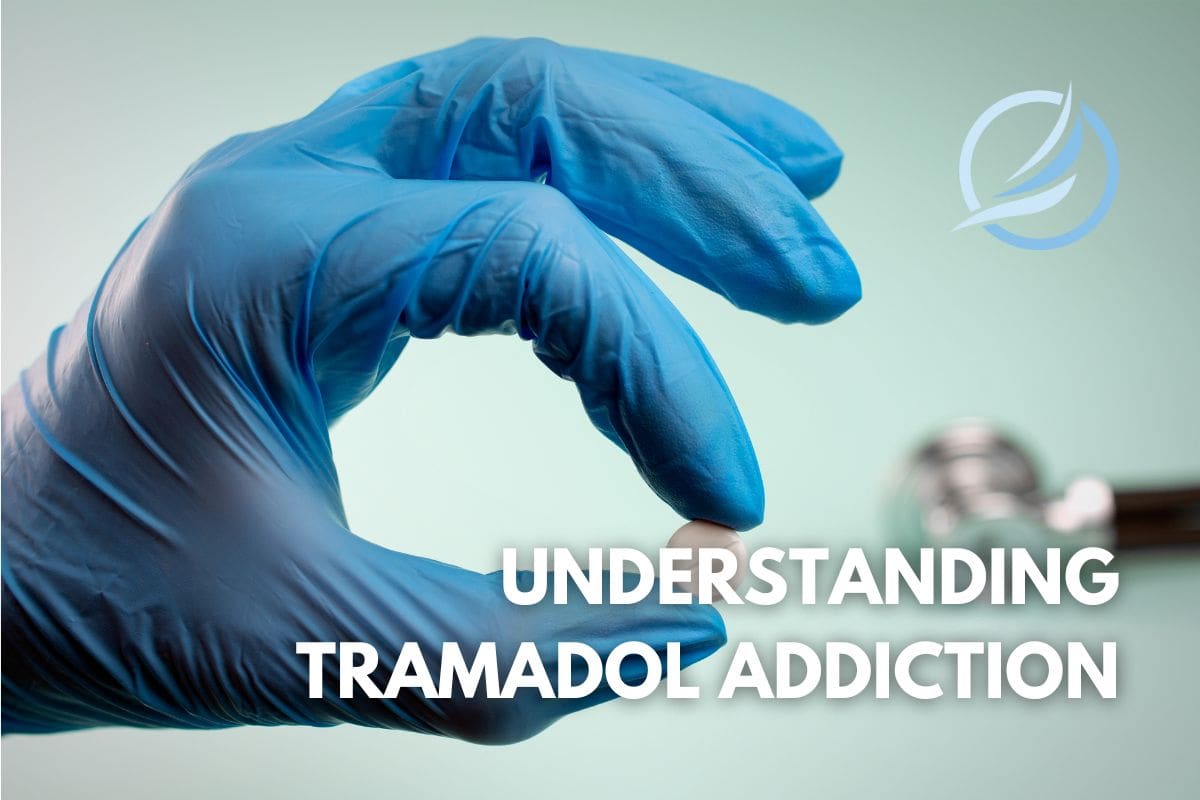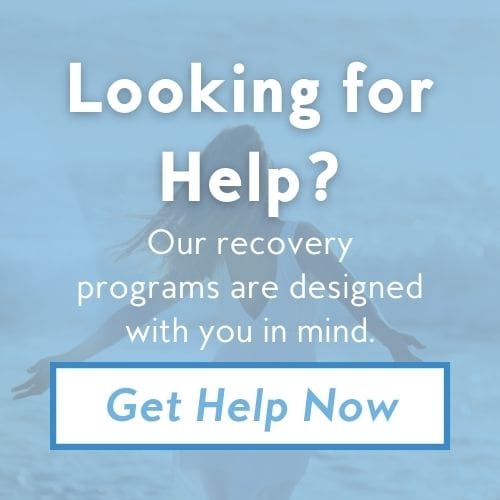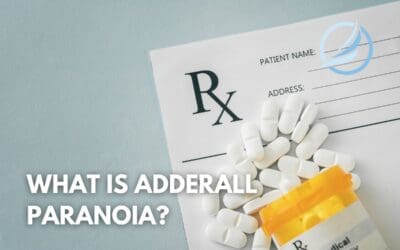Tramadol is an opioid used for pain relief, especially after surgeries or for chronic illnesses. Even though it’s not as addictive as other more potent opioids like heroin, a significant amount of people misuse tramadol. According to the 2022 National Survey on Drug Use and Health, 9.4% of the people who use tramadol misuse it.
This article will break down everything you need to know about tramadol addiction so you can seek help if you believe you have it or educate yourself and encourage others to seek professional support for their addiction.
What is Tramadol?
Tramadol is a prescription medication used to treat moderate to moderately severe pain. It is a synthetic opioid analgesic, which means it acts on the brain to change how your body feels and responds to pain.
Tramadol is available in immediate-release and extended-release formulations. The immediate-release form is typically used for short-term pain management, while the extended-release form is used for chronic pain that requires ongoing management.
Tramadol works by binding to opioid receptors in the brain and spinal cord, which helps to block pain signals. Additionally, tramadol increases certain neurotransmitters, like serotonin and norepinephrine, which also play a role in pain modulation.
Causes and Risk Factors of Tramadol Addiction
While tramadol is effective for pain relief, it carries risks, significantly if misused. Tramadol addiction can develop due to various causes and risk factors, which are often a combination of biological, psychological, and environmental influences.
Causes of Tramadol Addiction
- Prolonged Use: Using tramadol for an extended period can lead to physical dependence, where the body becomes accustomed to the drug’s presence, leading to tolerance (needing higher doses for the same effect) and withdrawal symptoms if the drug is stopped.
- Psychological Dependence: Individuals may develop a psychological reliance on tramadol, using it not just for pain relief but also to cope with stress, anxiety, or other emotional issues.
- Misuse and Overuse: Taking higher doses than prescribed or using tramadol more frequently than recommended can accelerate the development of addiction.
- Recreational Use: Some individuals may misuse tramadol to achieve a euphoric high, increasing the risk of addiction.
- Genetic Predisposition: A family history of substance abuse or addiction can increase the likelihood of developing an addiction to tramadol or other substances.
Risk Factors for Tramadol Addiction
- History of Substance Abuse: Individuals with a history of drug or alcohol abuse are at higher risk of developing an addiction to tramadol.
- Mental Health Disorders: People with mental health conditions, such as depression, anxiety, or PTSD, are more susceptible to developing an addiction, as they may use tramadol as a form of self-medication.
- Chronic Pain Conditions: Those with chronic pain who rely on tramadol for long-term pain management are at a higher risk of addiction, mainly if alternative pain management strategies are not utilized.
- High-Stress Environments: Individuals living in high-stress environments or with significant life stressors may be more likely to misuse tramadol to cope.
- Lack of Education on Risks: A lack of understanding or education about the potential risks and addictive nature of tramadol can lead to misuse and addiction.
- Easy Access to the Drug: Having easy or unsupervised access to tramadol, such as through multiple prescriptions or obtaining it from non-medical sources, increases the risk of misuse and addiction.
Signs and Symptoms of Tramadol Addiction
The most common symptoms of tramadol addiction are:
- Increased tolerance to the drug.
- Cravings for tramadol.
- Taking the drug in larger amounts or for longer than prescribed.
- Unsuccessful attempts to cut down or control use.
- Neglecting responsibilities at work, school, or home due to tramadol use.
- Continued use despite physical or psychological problems caused by the drug.
If tramadol addiction is suspected, it’s crucial to seek professional help, as overcoming opioid addiction often requires a comprehensive treatment approach, including medical detoxification, behavioral therapy, and support groups.
Long-Term Effects of Tramadol Addiction
Long-term tramadol addiction can have a range of serious and potentially life-altering effects on both physical and mental health.
Physical Health Effects
- Liver and Kidney Damage: Prolonged use of tramadol can result in conditions like liver cirrhosis or kidney failure, especially when taken in high doses or combined with other substances.
- Respiratory Issues: Chronic tramadol use can cause respiratory depression, a condition where breathing becomes shallow or slow. Over time, this can lead to hypoxia (lack of oxygen), which can damage vital organs.
- Gastrointestinal Problems: Long-term use of tramadol can lead to persistent gastrointestinal issues, including chronic constipation, nausea, vomiting, and, in severe cases, bowel obstruction.
- Hormonal Imbalance: Extended tramadol use can disrupt the body’s endocrine system, leading to hormonal imbalances. This can cause issues such as reduced libido, menstrual irregularities in women, and erectile dysfunction in men.
- Seizures: Tramadol lowers the seizure threshold, making users more prone to seizures, particularly when taken in high doses or combined with other medications that lower the seizure threshold.
- Cardiovascular Problems:
- Chronic use can increase the risk of cardiovascular issues, including hypertension (high blood pressure) and an irregular heartbeat, which can lead to more severe conditions like heart attacks or strokes.
- Weakened Immune System: Long-term opioid use, including tramadol, can weaken the immune system, making the body more susceptible to infections and illnesses.
- Cognitive Decline: Prolonged tramadol can impair cognitive functions, including memory, attention, and decision-making. Users may experience difficulties with concentration, learning, and retaining information.
Mental Health Effects
- Mood Disorders: Long-term tramadol addiction can lead to mood swings, anxiety, depression, and other mood disorders. The drug’s impact on neurotransmitter levels, particularly serotonin and norepinephrine, can exacerbate these issues.
- Psychological Dependence: Users may develop a strong psychological dependence on tramadol, where they feel they cannot function or cope with daily life without the drug. This dependence can contribute to feelings of helplessness and exacerbate mental health conditions.
- Social and Behavioral Changes: Addiction often leads to changes in behavior and personality. Individuals may become more isolated, experience relationship problems, or engage in risky behaviors to obtain the drug. Social withdrawal, neglect of responsibilities, and declining personal hygiene are common.
- Increased Risk of Mental Health Disorders: Chronic tramadol use can increase the risk of developing new mental health disorders or exacerbating existing ones, such as anxiety disorders, major depressive disorder, or substance-induced psychosis.
Overdose Risk
Prolonged use increases the risk of overdose, mainly if tolerance develops and higher doses are consumed. An overdose can lead to severe respiratory depression, coma, and death.
Treatment Options for Tramadol Addiction
Treatment options for tramadol addiction involve a combination of medications, psychotherapy, and support groups.
Medical Detox
Medical detox is the first step in the treatment process, aiming to safely manage withdrawal symptoms as the body clears tramadol from the system.
This is typically done in a controlled environment under the supervision of healthcare professionals who can provide medications to ease withdrawal symptoms, such as muscle aches, anxiety, insomnia, and gastrointestinal distress.
Medication-Assisted Treatment (MAT)
One of the most effective ways to treat tramadol addiction is Medication-Assisted Treatment (MAT). This approach combines medications with counseling and behavioral therapies. Here are some common medications used:
- Buprenorphine: Buprenorphine helps reduce withdrawal symptoms and cravings by partially activating opioid receptors without the high risk of misuse.
- Methadone: Methadone also helps manage withdrawal symptoms and cravings by acting on the same receptors as tramadol, but with a controlled and longer-lasting effect.
- Naltrexone: This medication blocks opioid receptors, preventing tramadol from having any effect when used. It helps reduce the risk of relapse by eliminating the reward associated with opioid use.
Rehabilitation Programs
Rehabilitation programs often provide detox and medication-assisted treatment within structured environments that promote recovery. The type of program depends on the individual’s needs and the severity of the addiction:
- Inpatient Rehab: Intensive, round-the-clock care in a residential setting. They are suitable for individuals with severe addictions or those who need a stable, drug-free environment to begin their recovery.
- Outpatient Rehab: Outpatient programs allow individuals to live at home while attending treatment sessions. They are suitable for those with less severe addictions or those who have responsibilities that prevent them from entering an inpatient program.
- Intensive Outpatient Programs (IOP): IOPs are designed to offer intensive treatment while allowing individuals to maintain their daily responsibilities, such as work, school, or family obligations. These are usually suitable for individuals with mild to moderate tramadol addiction who do not require round-the-clock care.
Counseling and Behavioral Therapies
Counseling and behavioral therapies are essential components of treatment for tramadol addiction. These therapies help address the psychological aspects of addiction, providing strategies to cope with cravings and triggers. Common approaches include:
- Cognitive Behavioral Therapy (CBT): CBT helps individuals identify and change negative thought patterns and behaviors related to their addiction.
- Contingency Management (CM): This approach uses positive reinforcement, such as rewards or incentives, to encourage abstinence from tramadol.
- Motivational Interviewing (MI): A counseling method that helps individuals find the motivation to change their behavior and commit to treatment.
Support Groups
Support groups offer a sense of community for individuals struggling with tramadol addiction. These groups provide a platform to share experiences, receive support, and gain insights from others who have faced similar challenges. Examples include:
- 12-Step Programs: Groups like Narcotics Anonymous (NA) provide a structured program of recovery based on peer support and a 12-step philosophy.
- Non-12-Step Programs: Alternatives like SMART Recovery offer evidence-based, self-help programs focusing on self-empowerment and cognitive-behavioral techniques.
- Peer Support: Connecting with others in recovery can provide emotional support, shared experiences, and encouragement to stay on the path to sobriety.
Recovery and Relapse Prevention
Relapse prevention is a critical part of the recovery process from tramadol addiction or any substance use disorder. Here are some practical relapse prevention tips to help maintain sobriety:
- Understand Your Triggers: Triggers are situations, people, emotions, or environments that increase the urge to use tramadol. These can include stress, specific social settings, places associated with past use, or emotional states like anger or sadness.
- Develop Healthy Coping Strategies: Engage in activities that keep your mind and body occupied, such as exercise, hobbies, or spending time with supportive friends and family. Learn to approach challenges with a solution-focused mindset rather than turning to tramadol for relief.
- Build a Strong Support System: Surround yourself with people who support your recovery. This could include family members, friends, support groups, or a sponsor in a 12-step program.
- Create a Relapse Prevention Plan: Work with a therapist or counselor to create a personalized relapse prevention plan. This should include steps to take when you encounter triggers, how to seek help if you’re feeling vulnerable, and what to do if you experience a relapse.
- Avoid High-Risk Situations: Avoid places, people, or situations that might tempt you to use tramadol. This could include avoiding certain social events or cutting ties with people who do not support your sobriety.
Seek Help for Tramadol Addiction
Recovery from tramadol addiction is a challenging journey, but with the right strategies, support, and commitment, long-term sobriety is within reach. By staying vigilant, nurturing your mental and physical health, and surrounding yourself with a strong support system, you can successfully prevent relapse and build a healthier, happier future.
If you or a loved one is struggling with tramadol addiction, don’t wait to seek help. Professional support is available and can make all the difference in your recovery journey. Reach out to a healthcare provider, addiction specialist, or local support group today. Taking that first step could be the most important decision you ever make.
Remember, you don’t have to face this alone—help is just a call or click away.


































